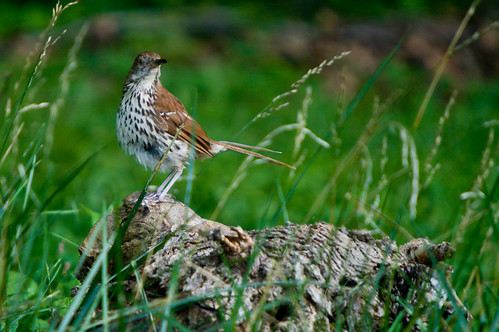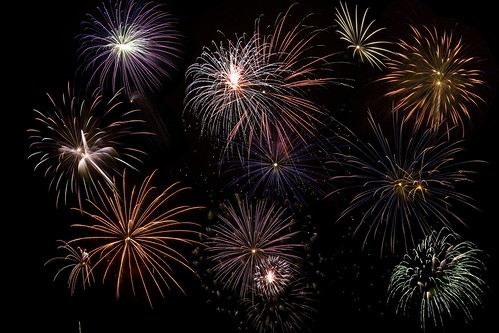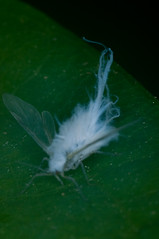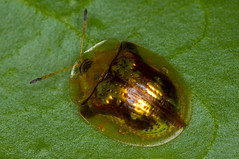Thursday, March 31, 2011
Tuesday, July 28, 2009
Crazy Times
 The shell has a couple of dents, but seems very watertight - gullywashers last night, and no water to be found inside, despite the dent in the back top.
The shell has a couple of dents, but seems very watertight - gullywashers last night, and no water to be found inside, despite the dent in the back top.I hope to get the chance to take some pictures soon. I've been mostly concentrating on nature type stuff, but I'm considering branching out.
Wednesday, July 22, 2009
BigmaBird

BigmaBird
Originally uploaded by jstevewhite
So I broke down and bought a Sigma 50-500 zoom lens, known in many circles as "Bigma" because it's a four pound monster of a lens with a vicious zoom and a cult following.
So far it seems the cult following is warranted. I've spent quite a few hours on pixel-peeper.com looking at images from long lenses like this, and the Bigma is head-and-shoulders above other third party offerings, from Sigma and from other vendors. Of course, Pentax doesn't make a lens in this range. The 60-250 f4 is a sweet piece of glass, but not long enough. I have the Tamron 180mm f2.5 and matched 1.4x TC that gets me a ~250mm f4 that's the equal of any zoom, and a 2x TC that makes it a 360mm f5, and still at least comparable to the zoom quality.
I shot fifty or sixty images in as many minutes, of inconsequential stuff like bike horns and swingset swivels, foxtails in the sunlight, and dead leaves. I saw lens shake in many images - 500mm is a LONG lens to stabilize regardless of the system - so I tripodded up, although the image accompanying this post is handheld. Critical focus is important, as the depth of field is very low, even at f11+.
I think this is not a low-light lens for anything that's not stationary. It's a sunlight lens - in the light haze today, I still had to shoot at ISO 800+ to get truly sharp images. No matter - I can't wait to shoot pix of the moon with this lens. It even has an aperture ring, so I can use the non-A teleconverter I have to make it a 1000mm f13 super telephoto! Combining ISO 1600 with some image stacking should net some really detailed images of the craters.
I think I'm going to return the Sigma 1.4x TC, however. It says it's for this lens, but if the zoom is at 50mm, the front element of the TC will impact the rear element of the lens. Not good, IMO. I'll pick up the Pentax 1.7x "Magic TC" instead. It has an autofocus motor inside it and adjusts focus by moving TC elements. This means that even manual focus lenses "snap in" to focus automatically when you get them close.
I can't wait to get out into some real woods and see what kinda bird/animal shots I can come up with using Bigma, though!
Tuesday, July 14, 2009
Photographic Vision: The Importance of Seeing

The primary creative task that a photographer engages in as he pursues his art is seeing. This may seem like a prosaic observation worthy of a hearty "Well, duh!", but I assure you that seeing isn't as easy as it sounds. Seeing, you see, isn't just looking. We all do that. And every one of us looks at scenes, every day, day in and day out, that would make beautiful photographs, but we don't see them. People frequently don't want to believe that, but it's true, I promise.
Sometimes we do see them, but we're too busy. We're driving to work, or grilling steaks, or arguing with the spouse, or taking out the trash. As we look around in the course of our chosen task, we may suddenly see a photograph, a scene that strikes us, that makes us think "wow, that would make a wonderful photograph!". But we don't have time, and we let the image slip away. It might have been the greatest image we've ever captured - or maybe not - but there's no way to know if we don't press the shutter button.

But there are other things that can get in our way. Selective blindness, for instance. This is a malady that has afflicted me since I was a child. I look at a scene, and I see it the way I want it to look - I capture the image in my mind, and see it there, clear and bright - but my mind edits out the bits I don't like. The images here are from a family picnic. I knew that the combination of kids playing (that's my daughter with some impromptu friends), water spraying, and the intermittent emergence of the sun from behind the clouds would create some excellent photo opportunities, so I strapped on my 50-135mm lens and started shooting. These two images are a couple of the shots from that group. I shot on the order of 100 pix of the various bits of the tiny water park with its splashing, flashing water, and splashing, laughing kids, and out of that plethora of images I found, perhaps, five or six that are worth anything.
Remember "selective blindness"? Above, do you see the red, arcing tube that's spraying water into the scene? That's exactly what it is. In these images, it's all right, as it adds to the composition and provides more water droplets. But in the vast majority of the images I shot, it's an eyesore, an unwelcome intruder that obscures faces, interrupts space, and breaks up compositions. And often it's out of focus, blurry and unattractive. Why is it there? Because I didn't see it. I looked at it, but I didn't see it, not as a photographer.
A photograph isn't random. A well-crafted photograph doesn't need chance or luck to provide its strength. It requires only seeing. Anyone can "get lucky" - like I said, we all look, all the time. If we shoot enough images, we may get lucky, as I did on these, and get a good image despite our lack of seeing. But if we learn to see, there's no limit to what we can do with our cameras. It's seeing that makes a photographer what he or she may be.
Monday, July 6, 2009
Love, 4th of July Style

Love, 4th of July Style
Originally uploaded by jstevewhite
I had to get out and try my hand at that photographer's coming of age act, shooting fireworks on the 4th of July. Of course I've done it with film, many years ago, in a different life, but I had to take a stab at it with digital. I gotta tell you, shooting with digital is MUCH easier, folks. POP! - check image and histogram; too hot, adjust aperture - POP! rinse and repeat until satisfaction is achieved. Then, sit back with remote release in hand. Wait till you hear the shell launch, count to three, and fire the shutter...
The results are fairly predictable and pedestrian, but I got what I was looking for - saturated colors and sharp streaks that more-or-less capture the feel of a fireworks display. For those interested, I shot these at ISO 200, f11, with about a three second shutter. Shutter speed affects how long the streaks are, and can affect how many shells appear in a shot, but it doesn't materially affect exposure. F16 made the most saturated colors, but the streaks were dim and difficult to see, and at f8, all the streaks were blown out white.
This image is a collage of the ones I liked the best from my approximately sixty-five captures. I cut 'em out with photoshop and pasted 'em into a new black document. Came out ok, I think. although I could spend more time on cutting them out.
Next year I think I'm going to go with a wider lens and try and get some of the crowd in *with* the fireworks, lit by the fireworks. Might have to go to ISO400 or so, I'm thinking, but we'll see. I dunno, there will probably be more fireworks - Maybe I can catch 'em over by the stadium... hrmmm....
Monday, June 29, 2009
KC Sunset

KC Sunset
Originally uploaded by jstevewhite
Many of the most interesting outdoors photographs you've seen in magazines all your life were shot in the hours of dawn +/-1 hr and dusk +/- 1 hr. There are a few reasons for this. For nature photographers, it's a requirement; many - even most - animals are most active during those two time slices. Fortunately, those hours also provide the most interesting light.
That's why, when you watch documentaries about, say, the Sports Illustrated Swimsuit Edition, you see them rousting the models at 4:00 am and getting them ready to shoot. When the sun lights up the sky from low angles and makes gorgeous clouds and colors, you get the "golden hour"; the whole sky becomes your softbox, and that pink/gold cast that we see periodically is simply magical for images.
So Saturday we had storms around KC, and I've been wanting to catch the city, lit up by the low-angle sunlight, against dark, glowering clouds for some time, so I set out to do so. Left the house at 7:30-ish and drove down to the city, looking for places to shoot from. What I discovered is that most of the clear view locations from where I'd remembered seeing the images I wanted to capture were in the middle of highways or streets. Obviously, in retrospect. What I discovered is that vehicular scouting for locations with a certain view is frustrating and not very productive. I finally got a couple of semi-decent shots - not what I'm looking for, yet , but sorta ok - standing in the middle of Main Street at 30th or so.
Anyway, after I gave up on that particular task because I was having zero luck, I was driving home. I happened to see the shot above, and couldn't resist. The couple on the bridge spoke to me - "Pretty cool, ain't it?" and then went back to watching the sunset. I couldn't resist getting a couple of shots with the couple in-frame. I wish the phone lines hadn't been there, though.
Sunday, June 21, 2009
New Baubles
 So I got my old Pentax-M macro sold on ebay, and made a profit on it. I took that money and a little bit more and bought the Samsung Schneider-Kreuznach D-Xenon 100mm Macro for Samsung and Pentax DSLRs - which is a re-badged Pentax D-FA lens. I couldn't wait to try it out.
So I got my old Pentax-M macro sold on ebay, and made a profit on it. I took that money and a little bit more and bought the Samsung Schneider-Kreuznach D-Xenon 100mm Macro for Samsung and Pentax DSLRs - which is a re-badged Pentax D-FA lens. I couldn't wait to try it out.

